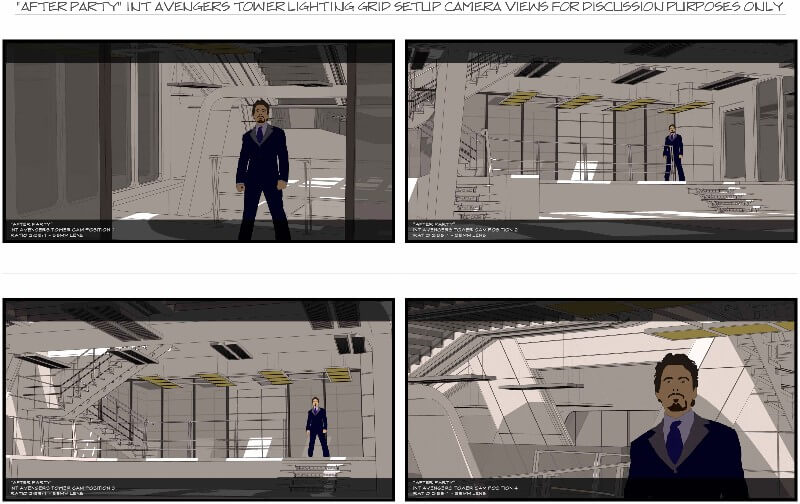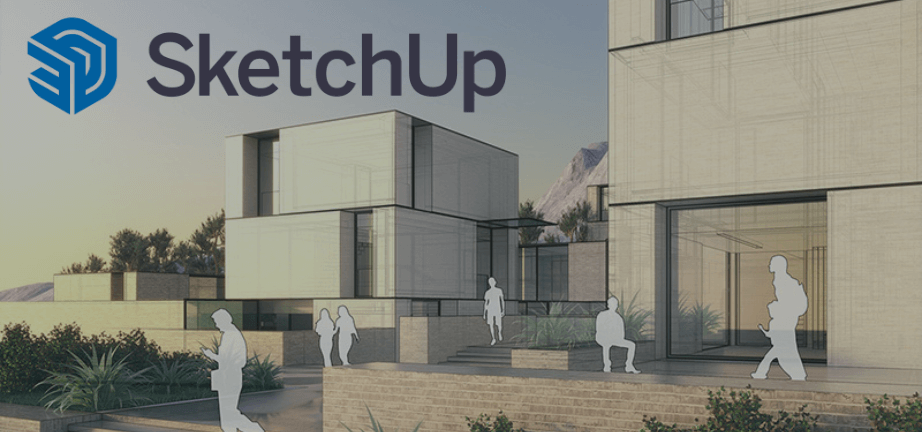SketchUp is an industry-standard 3D design software used by 41 million professionals and hobbyists around the world. The company offers a suite of design products, including free, Pro, Go, and Studio versions designed for various industries and higher education. SketchUp is universally known as a comprehensive 3D modelling tool with a low learning curve, making it the go-to choice for professionals in various fields, including architecture, interior design, construction, urban planning, and 3D printing.
Despite its prominence, not everyone is familiar with the history of SketchUp. In this article, we cover everything you need to know about how SketchUp became one of the Worlds’s most popular modellers. You’ll learn SketchUp’s incredible journey, from its humble beginnings, a Google acquisition, to becoming an essential part of teaching design students CAD basics.
The Genesis of SketchUp
SketchUp was developed by a tech startup named @Last Software in Boulder, Colorado. Architectural engineer Brad Schell and software developer Joe Esch built the progressive 3D modelling software based on several years of Schell’s handwritten notes. The project aimed to make 3D modelling accessible beyond trained CAD designers and provide architectural firms with more options.
Development of SketchUp
Initially released in 2000, SketchUp was designed as a 3D modelling tool for architects, designers, and filmmakers. The features included:
- Automated faces between coplanar edges
- Push/pull those faces into a third dimension
- A line could be locked into an interface while the cursor was free to move
These features, among others, were innovations in the design industry. In addition, the less is more philosophy of the software allowed users to reduce the time it took to model designs exponentially. SketchUp (eSketch at that time) was received with praise and would quickly rise to global notoriety, attracting new investors.
As SketchUp’s popularity grew, the software was implemented into other tools. The most significant collaboration was a digital mapping software called Keyhole, which would eventually evolve into Google Earth. Engineers from SketchUp would subsequently develop a SketchUp Google Earth Plugin, creating a partnership that would shape the company’s future.
Google’s Acquisition of SketchUp
In 2006, Google acquired SketchUp, marking a significant turning point in the software’s trajectory. With the help of Google’s resources and a newfound user base, SketchUp experienced rapid growth, solidifying its position in the 3D design and modelling software industry.
SketchUp was also assimilated into the Google ecosystem, integrating with various platforms such as Google Earth and Google Maps. While the partnership between Google and SketchUp already existed, the acquisition allowed for an easy incorporation into Google apps, facilitating a seamless user workflow.
SketchUp’s Evolution under Trimble
While the Google acquisition was monumental to the history of SketchUp, the partnership wasn’t necessary after the development of LiDAR. Google didn’t need user-generated geomodels; however, SketchUp’s value in professional architecture and design was still evident.
In 2012, SketchUp was acquired by entrepreneurial tech firm Trimble. The investment allowed SketchUp to evolve into a comprehensive office-to-field modelling solution. With Trimble’s help, SketchUp can now be used through the entire building construction life cycle.
SketchUp’s Role in Industry
Today, SketchUp is a significant aspect of Trimble’s Construction One platform. The 3D modelling software is integrated into a suite of connected digital solutions to help contractors visualise, design, detail, analyse, fabricate, plan, and collaborate, all in the same ecosystem.
SketchUp has become so popular in construction-related fields because of its accessibility. Anyone can learn the software, lowering the barrier to entry and helping entire teams get on the same page. 3D modelling has become essential throughout the building process, assisting firms in securing bids, collaborating with contractors, maximising budgets, and building projects right the first time.
While architecture, design, and construction are SketchUp’s most common use cases, the software is utilised in various industries. For example, SketchUp is used in the pre-visualisation for filmmaking. Luke Whitelock, Assistant Art Director for high-grossing studios such as Marvel, Fox, Universal, and Disney uses SketchUp to help bring movie sets to life. He uses the software to communicate his ideas to the set production team before they go into production. Whitelock also helped illustrate the “Wizarding World of Harry Potter” design in Orlando, Florida, with the assistance of the 3D modelling software.
SketchUp digitalised the lighting grid setup and camera views in Marvel’s Avengers Infinity War. You can see Whitelock’s work in action with the models below.

SketchUp’s current implementation in the industry is precisely what its founders imagined: An easy-to-use yet highly intuitive solution that connects designers and builders through software.
The SketchUp Community
One of the ways SketchUp has continued to evolve as a modern 3D modelling tool is through its massive community. Online forums, user groups, and a vibrant social media presence have cultivated a space where users exchange knowledge, tips, and inspiration. The online community is highly active, creating dozens of new threads daily. Here, users can engage with other SketchUp users to answer common questions within the platform.
SketchUp’s Educational Initiatives
SketchUp’s role in education extends beyond software; it catalyses creativity in classrooms. The SketchUp for Schools initiative integrates seamlessly into curricula, nurturing the next generation of designers, architects, and creative thinkers fostering a deeper understanding of 3D modelling in an engaging and accessible manner.
The more accessible version of SketchUp is available to any primary or secondary school signed up with a G Suite for Education or Microsoft Education account. Setup guides, curriculum, tips and tricks, and a helpline are readily available for educators on the SketchUp website.
SketchUp is Here to Stay
SketchUp stands as a testament to innovation and adaptability. From its humble beginnings to its pivotal acquisitions and integrations, SketchUp has continually evolved, becoming an indispensable tool across various industries, including architecture, design, and film. Its user-friendly interface and versatility have empowered creators worldwide, facilitating the visualisation and realisation of imaginative ideas.
As SketchUp continues to evolve and adapt to the ever-changing landscape of design and technology, its impact remains profound, shaping how we bring ideas to life in the digital realm and leaving an enduring mark on the world of 3D design.
SketchUp is available now at CAD Software Direct. Still not sold? Download a free trial!

